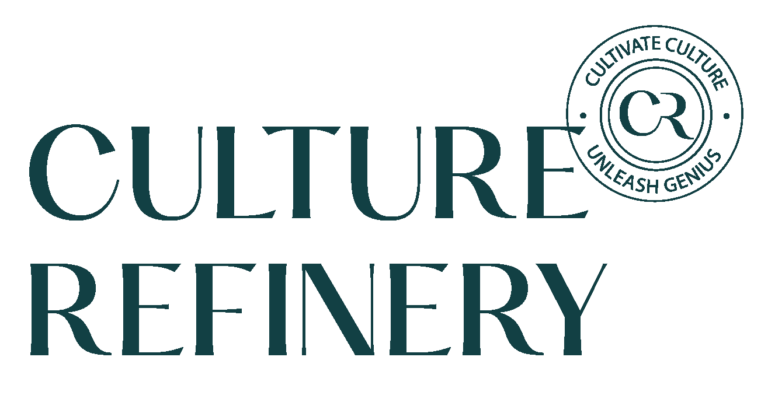“No.” It’s such a small word, but when it comes from an employee after you made a request – especially one who’s always been willing to go the extra mile – the impact can be huge.
So huge, in fact, an entire cultural trend emerged in 2022. As more employees began setting clearer boundaries in the face of the pandemic, the knee-jerk reaction from leaders was to describe the response as “quiet quitting.” “No” to many employers meant disengagement, lack of productivity, coasting, and pulling back as close to quitting as possible while still getting paid.
But the conversation about quiet quitting quickly passed when pushback exposed the critical errors in that point of view. First, no one was asking why employees were saying no more often. And no one could prove that newly established boundaries were truly damaging business results.
Research on employee experience, and our own work with leaders and employees at every level across multiple industries over the last three years, tell another story. After organizations pushed employees to stretch to their limits in response Covid, those workers have been quietly reflecting on that experience, and are affirming new boundaries that protect their well-being while allowing them to bring more energy to work. The kind of energy that allows them to be creative and innovative and engage with their work more wholeheartedly.
Out Of Touch Leadership Creates Disengaged Employees
The spark that triggered the perception among employers that people were “quiet quitting” can be traced back to a lack of visibility of the impact working through the pandemic had on their employees. That may be a result of not paying attention or not wanting to see. But it’s just as likely that employees weren’t announcing their burnout and all the steps they planned to take to feel better about work and themselves.
The disconnect between leadership perspective and employee experience isn’t new. But spending more time with family and less time commuting, experiencing the fear of a new and deadly disease sweeping the world, and being pushed at work through unprecedented challenges was new. And many workplaces were ill-equipped to measure the emotional toll, never mind manage it.
The Rise of Boundary-Setting Employees
Since 2020, workplaces have faced challenges no one could have anticipated – from creating remote work systems to managing supply chain slowdowns. And the turmoil continues. Imperfect processes, out-of-date leadership practices, lagging compensation for above and beyond work, and resistance to maintaining remote work opportunities despite the continued threat of Covid (even with vaccines) are all contributing to ongoing employee burnout.
Each individual’s experience may vary, but the boundaries they’re setting are more likely the result of quiet reflection on what’s contributing to their burnout and how to make work better than on a choice to quit quietly.
After saying yes to everything in order to rise up the ladder, employees are now recognizing the benefits of saying no, even if it’s just to take a quick ten-minute walk after a Zoom call to get some air. They are realizing that taking care of themselves is their number one priority and it should be their employer’s top priority, too.
What Employers Can Do Now To Keep Employees Engaged
Knowing employees are setting new boundaries, understanding their rationale, and choosing to support their psychological safety is just the beginning of accepting the shift in employee expectations for the best way to show up at work. There are many practical, meaningful steps employers can take to build on employees’ desire to pull back on work for work’s sake to bring their best selves to the work that matters most.
Proper workload management. Put an end to calendars double and triple booked with meetings, create meaningful manager check-ins, and have clear goals that translate throughout the business in order to empower employees to manage their workload without burning out.
Encouraging downtime and hobbies. Invite your employees to embrace their passions in and out of work. Allow time during the day for personal activities, celebrate non-professional achievements, and encourage employees to share their passions with their peers.
No meetings Fridays. When days are filled with meetings, work often gets done after hours (or during meanings). Creating a company-wide culture where employees have control over their calendars one day a week can help lighten workloads, increase focus, and boost morale.
Flexible work arrangements. According to a recent study, “1 in 4 parents are reporting being fired for work interruptions due to child care breakdowns.” Flexible work schedules benefit not only working parents but all employees with life events that take up time during regular working hours.
Better training for managers to be more inclusive. Team leaders, especially those in middle management, are the cornerstone of creating inclusive workplaces. Investing in consistent training alongside accountability helps to empower managers to build trust and lead inclusively.
More development for employees to sharpen their skills. Employee engagement requires engaging employees in ways that are meaningful to them and help them succeed. Investing in professional development from certification to coaching builds employee satisfaction.
Embracing Quiet Reflection As A Leader
While conversations about quiet quitting may be a thing of the past, its moment can still serve as an opportunity for leaders to do their own reflection on why accepting these new boundaries is so hard for them. Is it because they never did it and are now questioning their professional choices? Are they stuck in an old-fashioned idea that success requires pain?
The negative perspective on these new boundaries that have come from employees reassessing their priorities to be more holistic may be a knee-jerk, fear-based reaction. But if leaders take their own time to quietly reflect, they may find these boundaries are a good thing, have a better understanding of what’s truly important to their employees, honor those new ideas, and create even more engagement as a result.
How Culture Refinery Can Help
At Culture Refinery, we listen to the voices at every level of an organization to create a single conversation about the changes that need to be made. Beyond simply creating professional development opportunities for teams, we add in strategy reviews of organizations’ policies, procedures, and practices. And we emphasize one on one coaching for leaders at every level to help break down the barriers and biases that contribute to leadership disconnection, and employee disengagement. Contact us to learn more about how we can help your team thrive.





